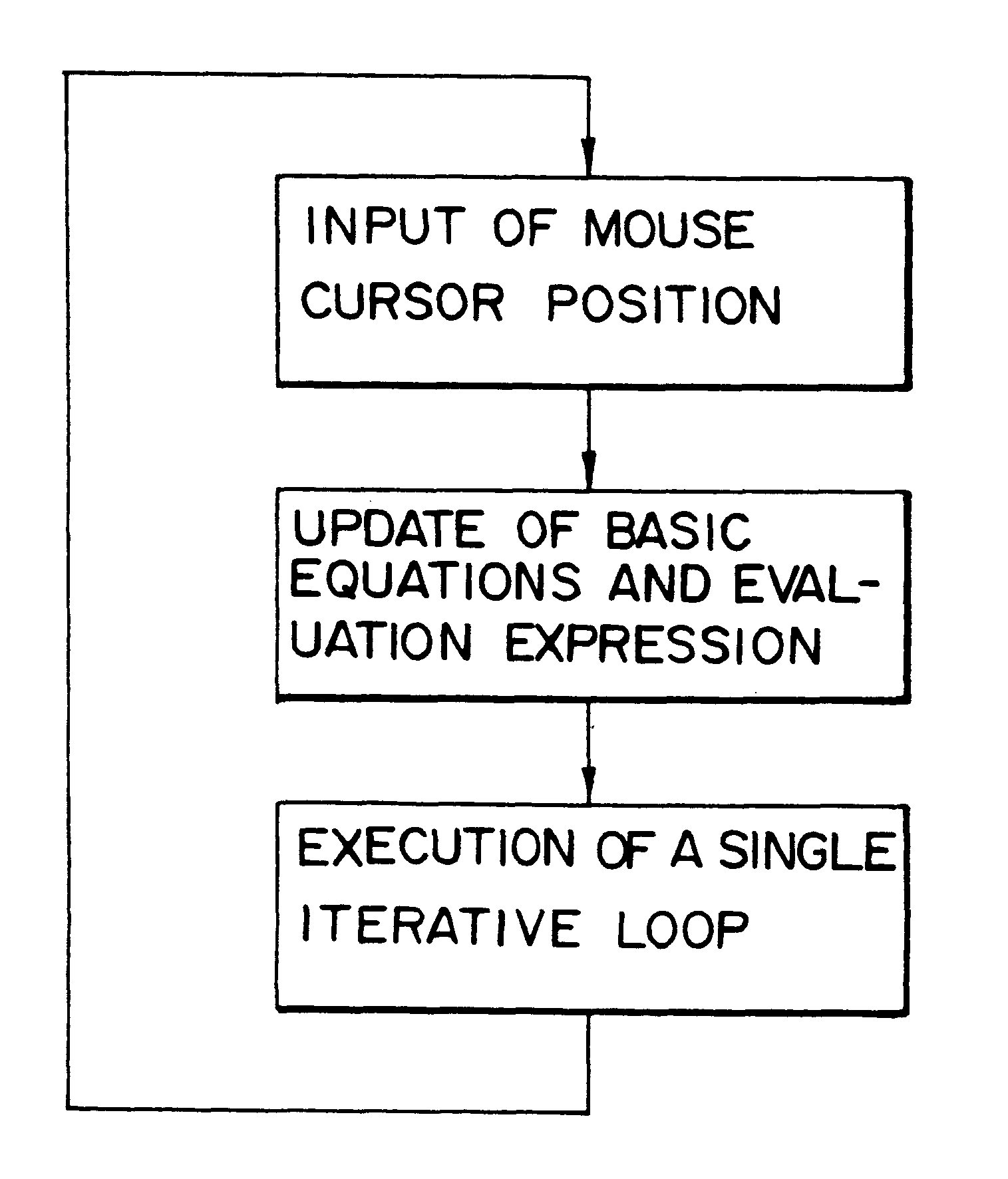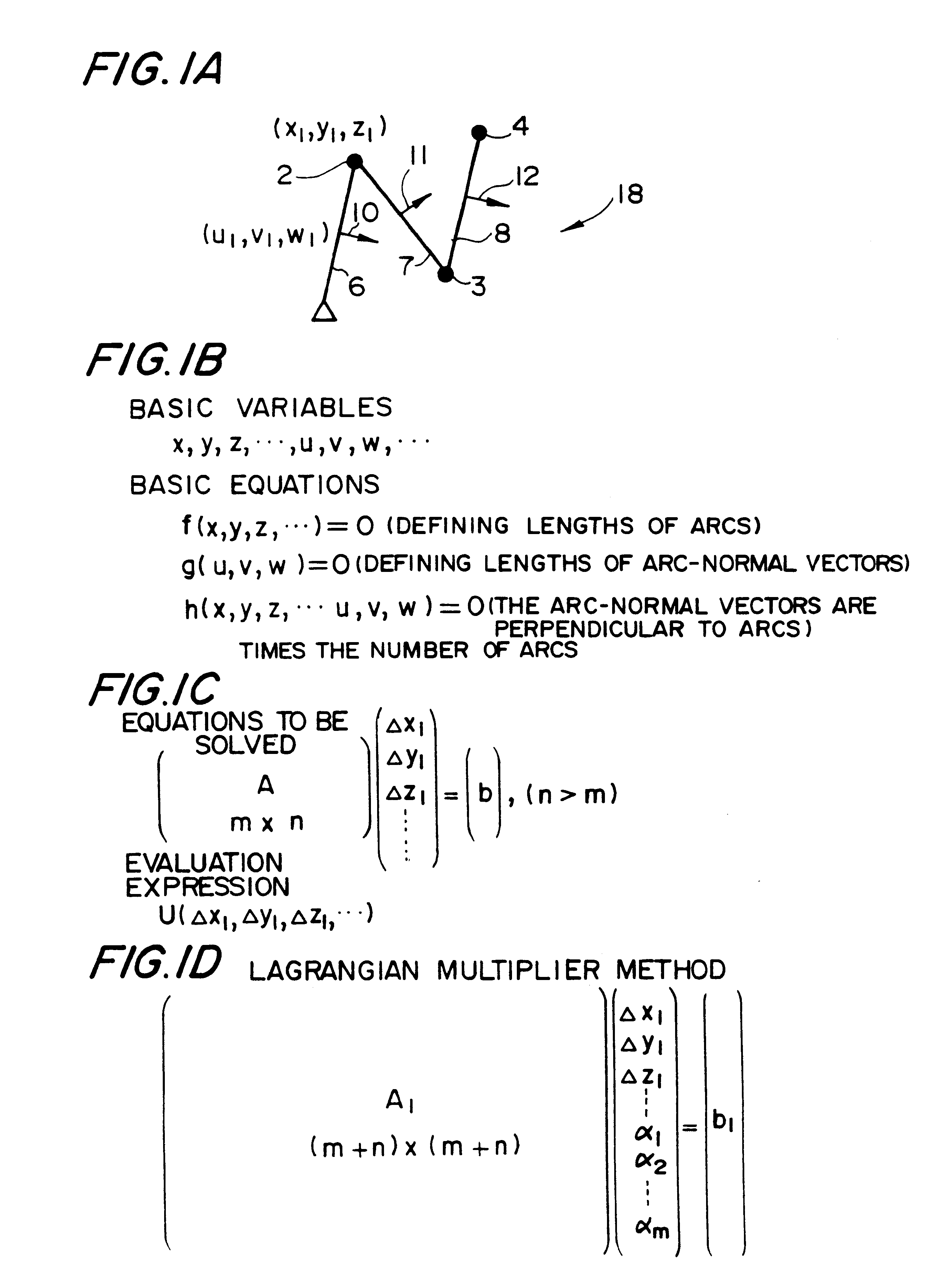Skeleton model shape transformation method, image synthesizing apparatus, and information storage medium
a technology of image synthesizer and skeleton model, which is applied in the field of transforming the shape of skeleton model, an image synthesizer and information storage medium, can solve the problems of difficult to obtain the inverse function, troublesome work, and difficult to handle a multiple-branch operation
- Summary
- Abstract
- Description
- Claims
- Application Information
AI Technical Summary
Problems solved by technology
Method used
Image
Examples
embodiment
1 Concept of Embodiment
Basic Principles
In this embodiment, the (x, y, z) coordinates of nodes 2, 3, and 4 and the (u, v, w) components of arc-normal vectors 10, 11, and 12 (which are perpendicular to arcs 6, 7, and 8, respectively) are used as basic variables representing a skeleton model 18, as shown in FIG. 1A. Taking as an example the prior-art model of FIGS. 22A, 22B, and 22C, which uses arc-to-arc angle as basic variables, it is necessary to set parent-child relationships. With that prior-art technique, nodes and arcs cannot be handled uniformly, but this embodiment, which uses node coordinates and arc-normal vectors as basic variables, makes it possible to handle all nodes and arcs in a uniform manner. Note that other variables could equally well be used instead of arc-normal vectors, for example.
These basic variables are then used as unknowns in basic equations, as shown in FIG. 1B, which provide an equation defining the length of an arc as a given value, an equation definin...
PUM
 Login to View More
Login to View More Abstract
Description
Claims
Application Information
 Login to View More
Login to View More - R&D
- Intellectual Property
- Life Sciences
- Materials
- Tech Scout
- Unparalleled Data Quality
- Higher Quality Content
- 60% Fewer Hallucinations
Browse by: Latest US Patents, China's latest patents, Technical Efficacy Thesaurus, Application Domain, Technology Topic, Popular Technical Reports.
© 2025 PatSnap. All rights reserved.Legal|Privacy policy|Modern Slavery Act Transparency Statement|Sitemap|About US| Contact US: help@patsnap.com



